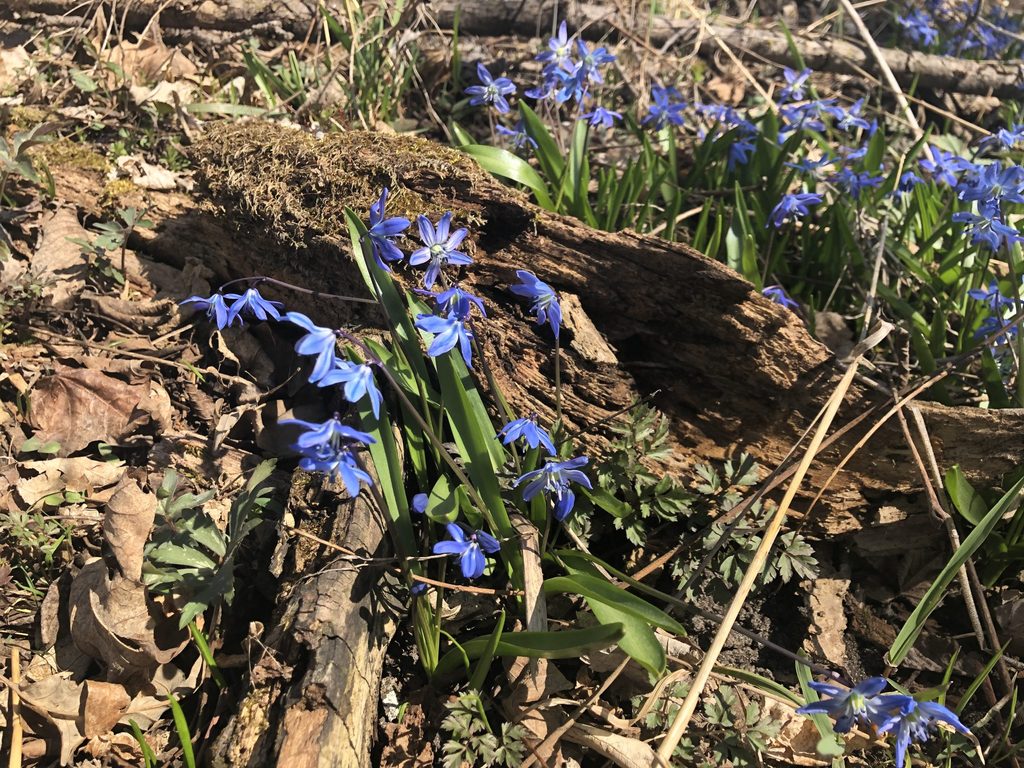As the implausibly gorgeous weather jumpstarts Spring Term, many of us find ourselves savoring the warm breeze on lawns or under trees. Taking a stroll across campus, you likely would notice some elegant indigo flowers fluttering in the wind on their slender stalks; in the Upper Arb woods, those striking colors together with their lush green leaves weave into a carpet of indigo that dominates the undergrowth.
The Siberian Squill (Scilla siberica), our prolific eye-catcher, is a perennial plant native to southwestern Russia, unlike what the name suggests. It blooms from March to May. Like many plants pleasing to the eye (this one having the bonus of easy reproduction and cold tolerance), the Siberian Squill was introduced into North America as an ornamental plant. And like many non-native ornamental plants, its vigor cannot be easily contained within gardens– it went invasive.
Eradicating the damsel causing distress proves to be challenging. In addition to its general resilience, the plant seeds readily and can also resprout from broken roots. Few herbivores graze it due to the toxic alkaloids present in all parts of the plant. Herbicides have little effect thanks to the protective layer (the waxy cuticle) on its leaves which bars herbicides from entering its system. If there is any consolation, the aggressiveness of the Siberian Squill is relatively low, thus allowing us time for developing effective control methods. Meanwhile, our efforts have been directed towards the more competitive and better understood species such as buckthorn and honeysuckle. Nevertheless, planting native species in your garden is always a good way to nip trouble in the bud: hepatica and bluebells both provide delightful blue flowers.
For more information, Minnesota Wildflowers is a great place to start. A more detailed description of the Siberian Squill is available on Illinois Wildflowers.
— Kestrel Liu ’23, for the Cole Student Naturalists

Add a comment